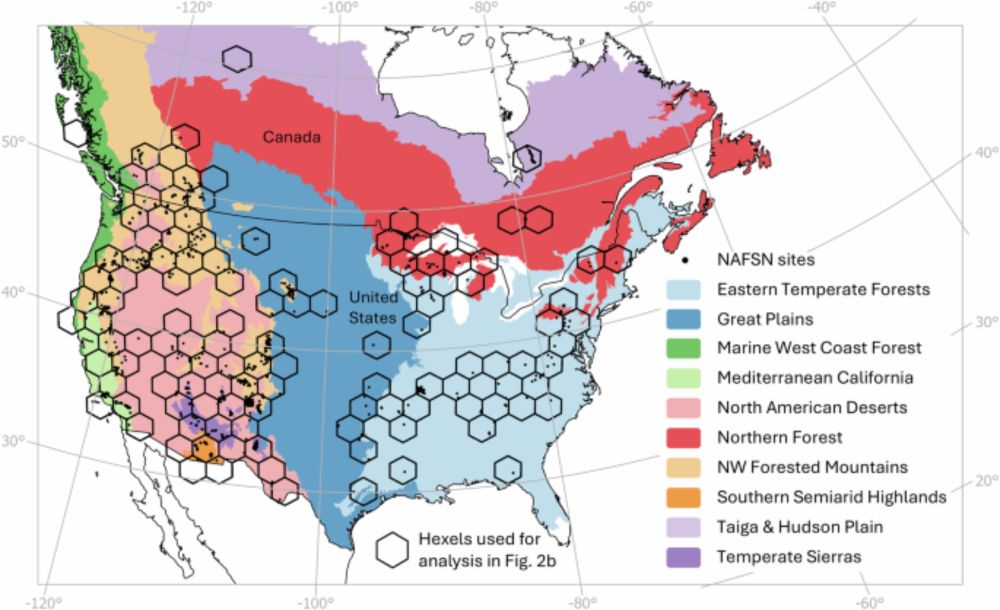
Ph.D. (Ecology & Environmental Science) Montana State University --
B.S. (Forestry) CalPoly Humboldt
This week, create a Go Bag for your pet(s).
I started writing blog posts to accompany each week’s tasks, so please visit my website to read more details and find links to additional resources.
www.kristaleewest.com/fireprepfrid...
This week, create a Go Bag for your pet(s).
I started writing blog posts to accompany each week’s tasks, so please visit my website to read more details and find links to additional resources.
www.kristaleewest.com/fireprepfrid...
Our team just published a new paper in Global Change Biology 🧪🔥
The title succinctly describes the main take home message, but here's the deal:
We produced gridded, fine-scale (resolution = 30m) daily fire progression maps for 623 wildfires in the SW US using satellite fire data.
read on ...

Our team just published a new paper in Global Change Biology 🧪🔥
The title succinctly describes the main take home message, but here's the deal:
We produced gridded, fine-scale (resolution = 30m) daily fire progression maps for 623 wildfires in the SW US using satellite fire data.
read on ...

Please see our new paper in Nature Communications!
We used 1,851 tree-ring fire-scar sites and contemporary fire perimeters to quantify the prevalence of wildfire from 1600-1880 compared to 1984-2022. 🧪🌍🔥
Our key findings are as follows ...

Please see our new paper in Nature Communications!
We used 1,851 tree-ring fire-scar sites and contemporary fire perimeters to quantify the prevalence of wildfire from 1600-1880 compared to 1984-2022. 🧪🌍🔥
Our key findings are as follows ...
What can tree-rings tell us about our built heritage, timber trade & environment?
The Dendrochronicle website events page has just been updated for 2025’s first few gigs.
dendrochronicle.co.uk/events/

What can tree-rings tell us about our built heritage, timber trade & environment?
The Dendrochronicle website events page has just been updated for 2025’s first few gigs.
dendrochronicle.co.uk/events/
link.springer.com/article/10.1...

link.springer.com/article/10.1...


The rare find reveals an exceptional view of our recent climate past, including the effects of Icelandic volcanos on global temperatures.
New from me @newscientist.bsky.social

The rare find reveals an exceptional view of our recent climate past, including the effects of Icelandic volcanos on global temperatures.
New from me @newscientist.bsky.social
Read it here 👉 www.nature.com/articles/s41...

Read it here 👉 www.nature.com/articles/s41...
dx.doi.org/10.1002/ecs2...
We found that whitebark pine trees showed positive responses to thinning, including increased growth and resin duct production. Thinning also created conditions favorable for seedling and sapling establishment. Check it out!

dx.doi.org/10.1002/ecs2...
We found that whitebark pine trees showed positive responses to thinning, including increased growth and resin duct production. Thinning also created conditions favorable for seedling and sapling establishment. Check it out!

@econovoau.bsky.social invites applications for an exciting PhD project exploring the ecological impacts of wild horses on fire dynamics and ecosystem functionality in sagebrush ecosystems.
More information here: phd.nat.au.dk/for-applican....
@econovoau.bsky.social invites applications for an exciting PhD project exploring the ecological impacts of wild horses on fire dynamics and ecosystem functionality in sagebrush ecosystems.
More information here: phd.nat.au.dk/for-applican....
We found that 70% of smoke-borne bacteria originated from the aspen (33%) & soil (37%) communities at the burn location.
🌎🔥🧪💻🧬
doi.org/10.1029/2024...
#FireEcology #smoke #microbiology #NSF

We found that 70% of smoke-borne bacteria originated from the aspen (33%) & soil (37%) communities at the burn location.
🌎🔥🧪💻🧬
doi.org/10.1029/2024...
#FireEcology #smoke #microbiology #NSF
Drought reduces growth, triggers dieback & can kill trees, but how does it affect tree reproduction? Help us answer this question! Join a great team in Liverpool & Kew, inc. @belenfadrique.bsky.social 🌳🌱🌲 Deadline = Jan
Info: tinyurl.com/3z9z3ad6

Drought reduces growth, triggers dieback & can kill trees, but how does it affect tree reproduction? Help us answer this question! Join a great team in Liverpool & Kew, inc. @belenfadrique.bsky.social 🌳🌱🌲 Deadline = Jan
Info: tinyurl.com/3z9z3ad6
#Soil #Microbiome #ClimateChange

#Soil #Microbiome #ClimateChange

